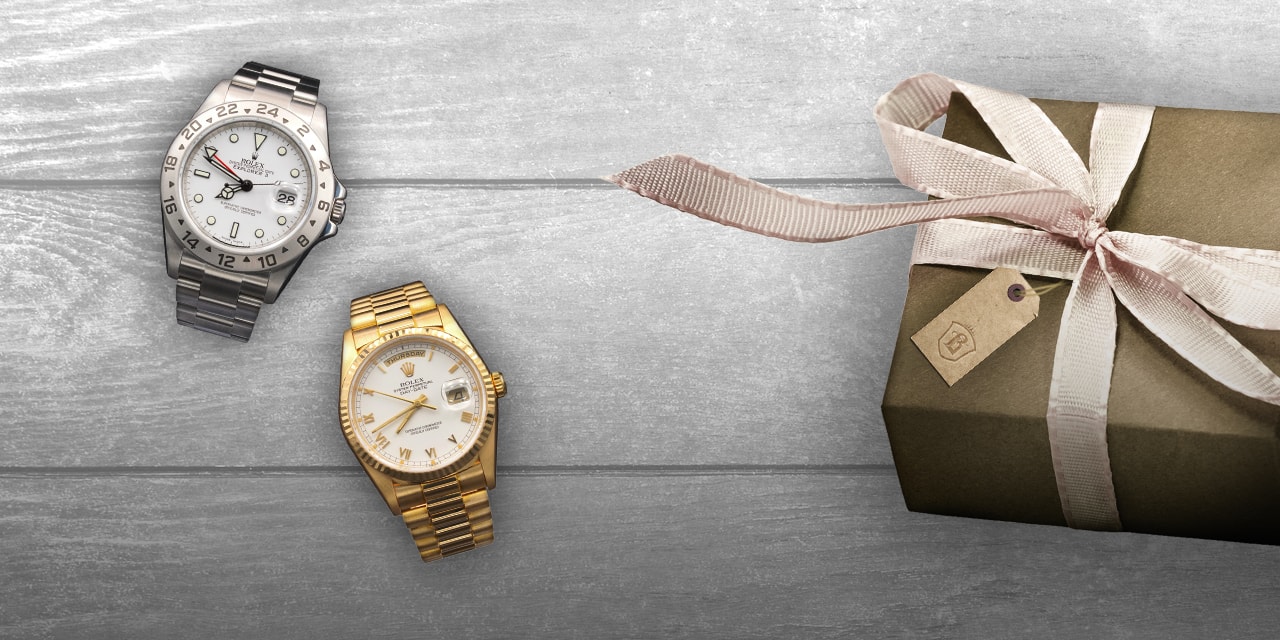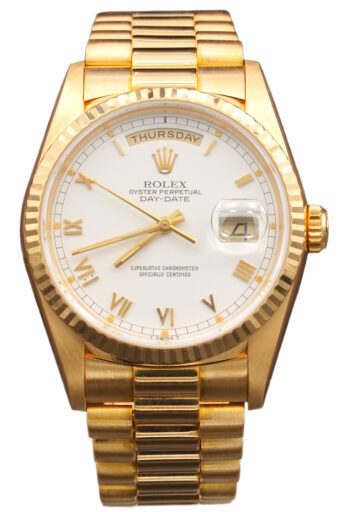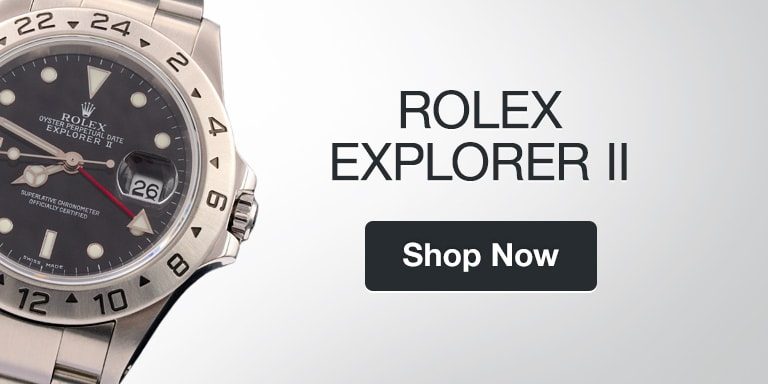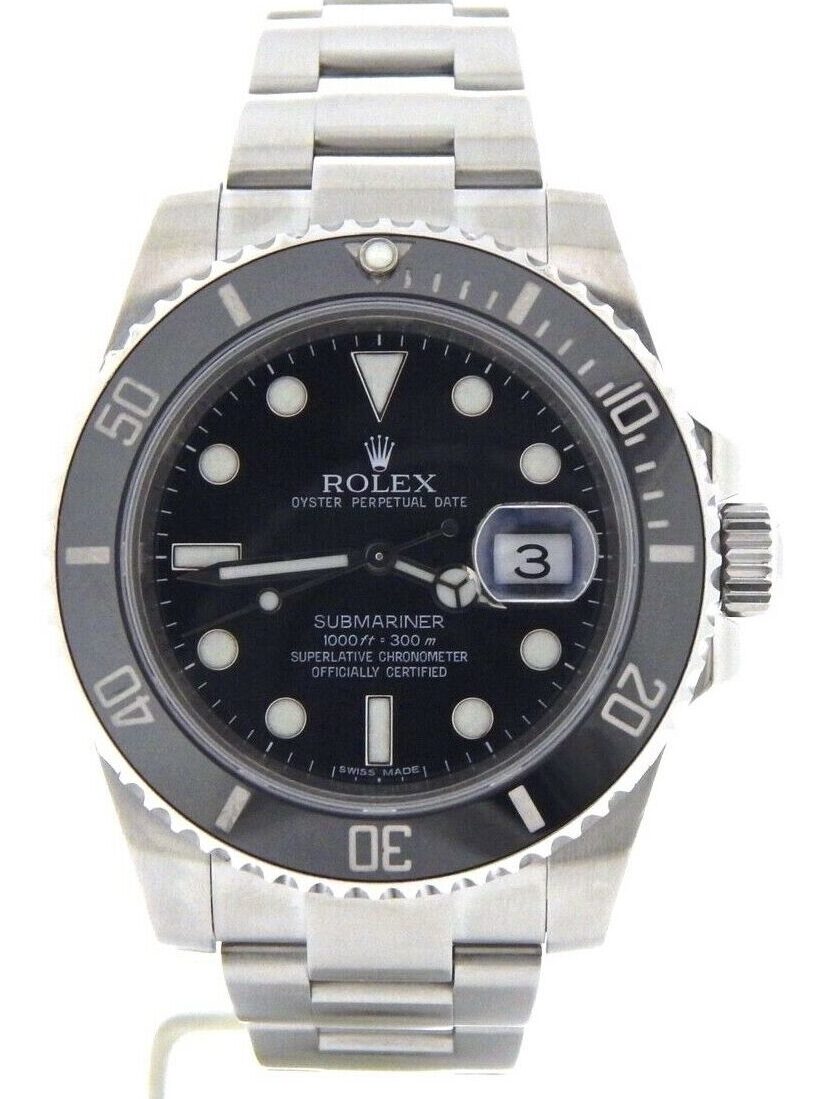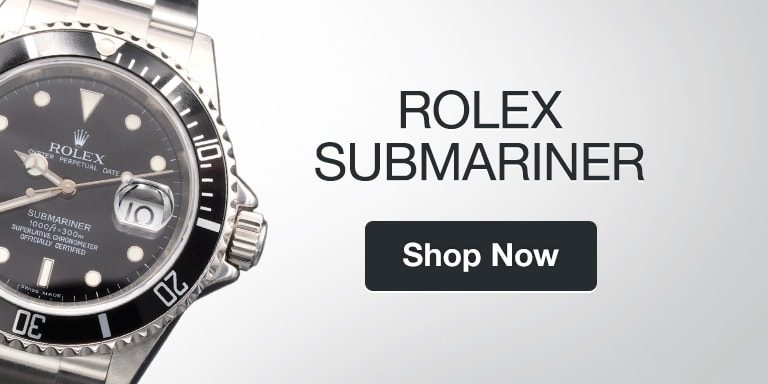The BeckerTime 2024 Shopping Guide: The Best Value Rolex Watches You Can Buy Right Now
And a Happy 2024, one and all, from everyone here at BeckerTime!
Just like you, we’re all eager to see exactly what this year holds in store and are, more than ever, looking forward to continuing to assist clients new and old with their first or next purchase of a Rolex watch.
To that end, this year we have decided to offer up an entire series of shopping guides focusing on the most up-to-date insider advice.
Over the coming months, we’ll be publishing a string of informative articles on buying some of the most popular individual models, as well as on other helpful topics such as the wide range of different metals and materials, the various dials, bracelets, and sizes available and what you can expect to find at each price point.
Now, as it’s just after Christmas, we thought we would kick it all off with how to get the best bang for your buck; the Rolex watches offering the most value for money.
The Rolex Year Ahead
2024 promises to be a very interesting year for Rolex buyers. For the first time in as long as anyone can remember, the brand has made significant efforts to production of its watches. Three new temporary facilities are set to be up and running this year and next, along with a permanent $1BN installation currently under construction and due for completion in 2029.
So what will this escalation mean? As you will no doubt be aware if you’ve tried, buying a new Rolex from an Authorized Dealer usually involves, at best, a frustrating wait and at worst, giving up entirely.
The next step then is to the preowned market where you get the pleasure of paying an additional premium, and normally a steep one.
Modern Versus Vintage
With greater production capacity, the number of new watches available at retail outlets should increase and simple economics will tell you that more supply equals demand. However, that most certainly does not mean they will be cheaper to buy through your local AD. If anything, we can be fairly sure Rolex will be ramping up prices in the near future to pay for all this shiny new infrastructure.
But what about the preowned market? Well, there we will probably see a definite and more noticeable split between two groups—modern and vintage.
The upsurge in new watches available through official channels is likely to affect the preowned prices of the modern range of Rolex models, and particularly the ‘must-have’ pieces, more than the vintage ones. Those contemporary Daytonas, Submariners and GMT-Masters are liable to take a pretty sizeable depreciation hit, far more than the vintage collection. As we saw in 2023, the latest models lost far more in value than their retro cousins. That’s not to say that the older watches won’t come down in price in the short term, but the drop is likely to be much less than the newer pieces.
Which Vintage Rolex is Right For you?
In terms of getting the most Rolex for your money then, in both initial outlay and future investment terms, it seems vintage is the way to
Occasionally people can be put off when they hear that word, envisaging some rusty old watch barely hanging together, let alone able to tell the time.
However, in the case of luxury watches, you only have to go back some 20-25 years before a model qualifies as vintage and that, disturbingly, means anything from the turn of the century and on down. The great thing about timepieces, and particularly those engineered by the likes of Rolex, is that they are, above all else, built to last. Two decades and even far longer is practically nothing in that regard, and leaves you with oceans of exceptional watches from which to choose which will serve several lifetimes.
Below, we have selected some vintage models for you to mull over, ranked next to their contemporary equivalent so you can see just how much you can save.
The Rolex Day-Date
We might as well start at the top.
Many-a Rolex model has picked up a nickname or two over the years, but few have been stamped with a more apt moniker than the Day-Date, aka The President.
A watch which has seen more dark corridors of power than any other, it was the chosen timepiece of figures such as Lyndon B. Johnson, Nixon, Reagan, Ford and Trump and has, in later years, transcended its establishment proclivities and been spotted adorning the wrists of characters as diverse as Michael Jordan, Warren Buffet and the Dalai Lama.
However, even for a manufacture which alters its creations at as glacial a pace as Rolex, the Day-Date stands out as one of the most enduring and infrangible designs in their history. From the end of the 1950s, by far the biggest changes going on with The President have all been on the inside.
That is good news for anyone in the market for the flagship offering from the world’s most admired watchmaker. A Day-Date from 20 or 30-years ago is, to all but the sharpest-eyed observer, virtually identical to one fresh from today’s showroom. Even the upgrade in movement from then to now is negligible in real world terms; Rolex has never made a bad engine and a well-looked after vintage model will, as near as makes no difference, keep time as accurately as a new watch.
So, let’s pick the archetypal President for a comparison test and look at some numbers.
The current 36mm yellow gold Day-Date, with fluted bezel and traditional baton hour markers (ref. 128238) retails at $35,000. On the preowned market, you can pick one up for around $37,000. So, by no means cheap, as you would expect from the ultimate statement watch.
But, what if we go back a generation or so? The previous iteration, the ref. 118238, ran from 2000 up to 2019 and worked on an older movement; the Cal. 3155 as opposed to the current Cal. 3255. However, both are superb calibers and post-2015, were each held to the same draconian standards for timekeeping precision; the -2/+2 seconds a day of Rolex’s own ‘Superlative Chronometer’ certificate. And the price? Older examples from the first few years of the millennium can be as low as $20,000, while more recent pieces are still often south of the $30,000 mark. Go back one generation further to the ref. 18238 (1988-2000) and you can save even more—about $15,000 as a start point.
Apart from the new movement, the most significant change between those three references was a very slight reworking of the case and lugs for the latest collection and an improved clasp and bracelet with all solid links going from the ref. 182XX to the ref. 1182XX series. Other than that, there really isn’t a lot to tell them apart except for the amount of change you get back.
A watch that speaks volumes about its wearer, the Day-Date is now one of Rolex’s underappreciated bargains.
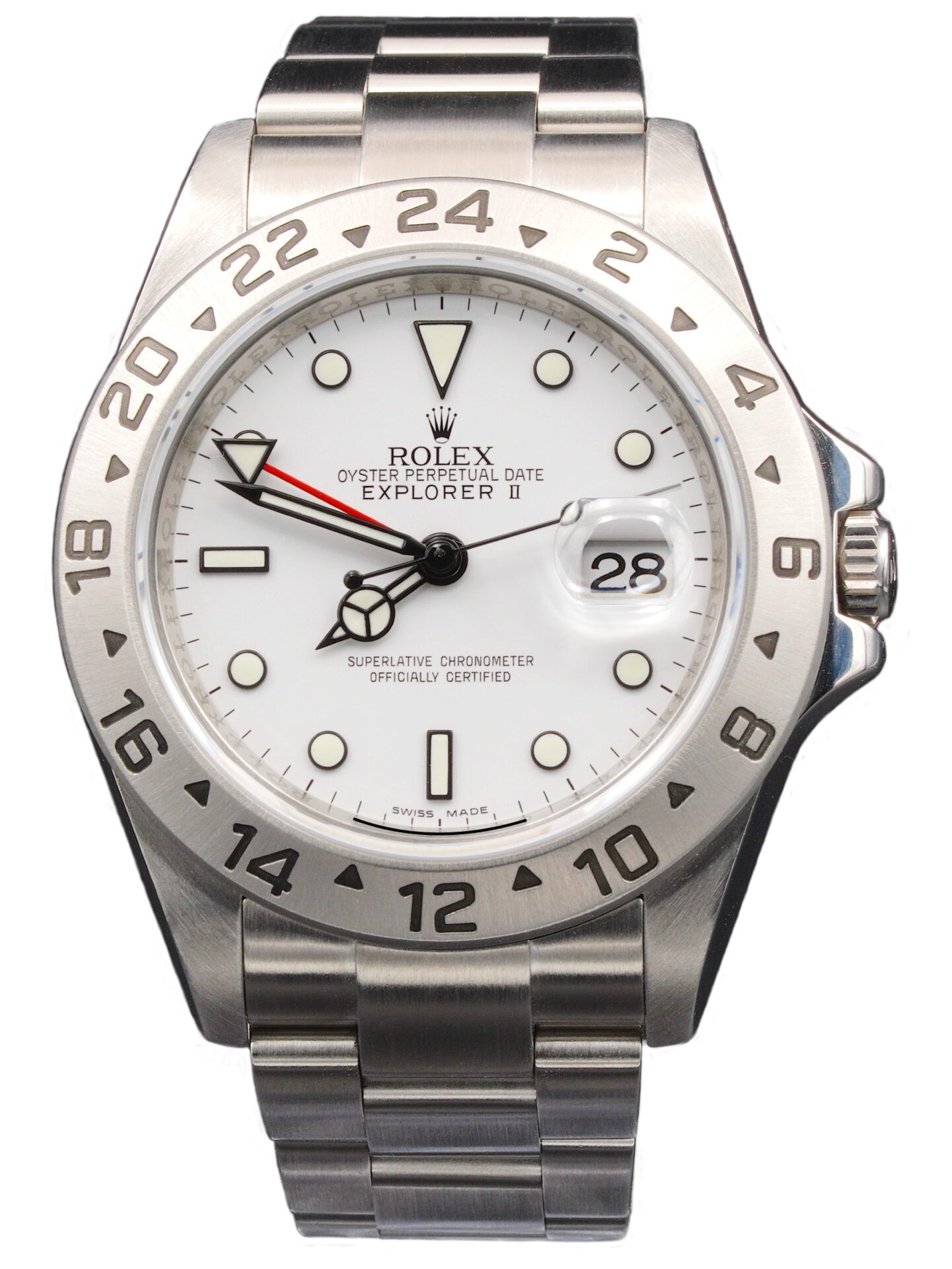
The Rolex Explorer II
Speaking of underappreciated…
Rolex’s spelunker’s watch (cave diving to you and me) has long been the sleeper in the collection; a fine, dual time zone model lost in the shadows cast by itse colorful stablemate, the GMT-Master.
But the Explorer II has a cult following all its own, made up of those who like to chase their luxury with a generous dash of ruggedness.
As with the Day-Date, Rolex nailed the design of the Explorer II pretty sharpish in the ‘70s, hitting on an aesthetic they were happy with and sticking to it for the next 40-years or so.
Then, in 2011, they opted to go a bit more modern while at the same time reinstating a vintage touch which had been absent for a few decades. The ref. 21570 grew the case (exclusively in steel from the very beginning) from the previous 40mm to 42mm, but brought back the so-called Freccione, the bright orange GMT hand which had been a major plus point on the debut reference from 1971.
In 2021, the latest series landed, the ref. 22570, which was essentially the same outwardly as the one before but with an updated movement.
So how do we go about getting the most Explorer II for your money? Again, we can look at the figures.
Brand new, you will be paying $9,650 for the most recent models from your AD. On the preowned market, you will be lucky to find one under $10,500—it may be among the crown’s dark horses, but it is still a steel Rolex sports watch, after all.
The vintage options? Entry into the Explorer II club starts with the ref. 16570. That was the third generation of the watch, released in 1989 and running all the way up to 2011. It was the replacement for the short-lived ref. 16550 which was only around for about four years and was usurped because Rolex made improvements to the Cal. 3035 movement running it, albeit relatively slight (basically installing a full balance bridge, a larger balance wheel and four more jewels) to create the Cal. 3185. It was the same caliber found in the period’s GMT-Masters and was swapped again in the ref. 12570 Explorer II around 2005 for the Cal. 3186. That introduced the Parachrom hairspring and moved the drive wheels closer together to eliminate the often-mentioned ‘handslop’ of earlier models.
And the cost of a ref. 12570 in excellent shape these days? You will easily find them for about $8,000 or even lower—more than $2,500 cheaper than the latest reference on the preowned market and a very healthy chunk off even the retail price.
The Rolex Submariner
Fancy saving a lot of money on a genuine icon?
The last few years have seen the seminal dive watch legend that is the Submariner go through what, for Rolex, constitutes a fairly substantial round of modifications.
Firstly, in 2010, the brand rolled out the ref. 11661X series complete with their new Super Case. These bulked up specimens, with crown guards and lugs nearly twice the thickness of previous incarnations, were a major revision on the lithe figure the Sub had enjoyed for about the last half century. Although it was done to address criticisms from more modern buyers that the venerable old man was in need of a bit of added wrist presence, it also split opinion and most certainly was not for everyone. It gave the watch the illusion of having grown in size when, in reality, it had the same 40mm diameter as before.
Fast forward to 2020 and Rolex did, in fact, enlarge the Submariner, up to a heady 41mm—the first time in its history it broke the 40mm barrier. The current ref. 12661X range (and the ref. 124060 for the no-date) has brought the slender lines back and been greeted warmly by both contemporary audiences and traditionalists alike. Well, most of them.
Some purists still decry the ceramic Cerachrom bezel used on the present-day Submariner and a number of Rolex’s other sports pieces. A high tech and incredibly tough material, it is reportedly fadeproof and scratchproof—and therein lies the problem for many.
Lovers of vintage watches are, by and large, lovers of stories. They want their watch’s biography writ large on its surface, with a few scars here and there and a bit of weathering to hint at exotic places and exciting adventure. Modern Rolexes will look pristine pretty much forever, while those from yesteryear have tales to tell.
Fortunately, you don’t have to go back far to find Submariners with character.
Often referred to as ‘the last of the best’, the ref. 1661X series came out in 1988 and lasted until 2010—when it was replaced by the Super Case generation. That extremely long run means there is no shortage of examples available, keeping prices very reasonable.
For instance, the current steel model with black bezel, the ref. 126610LN, comes in at $10,250 retail and more than $12,500 preowned. However, you will find hatfuls of the equivalent ref. 16610 for $8,000 or $9,000 or less.
If you want an even more enticing disparity, you should take a look at the wonderful ‘Bluesy’, the nickname given to the yellow Rolesor Subs with blue dial and bezel. A new ref. 126613LB today will cost you $15,500from your Authorized Dealer and at least $17,500 preowned, while the older ref. 16613LB can be found for $11,000 and under. A stunning, striking watch for a knockdown price, it is hard to beat those stats.
As we said, this year is going to be an interesting one for consumers. A larger number of Rolex watches, theoretically, available through their own retail network is liable to be disruptive for the preowned market. But the vintage models are likely to retain stronger value in the long run.






